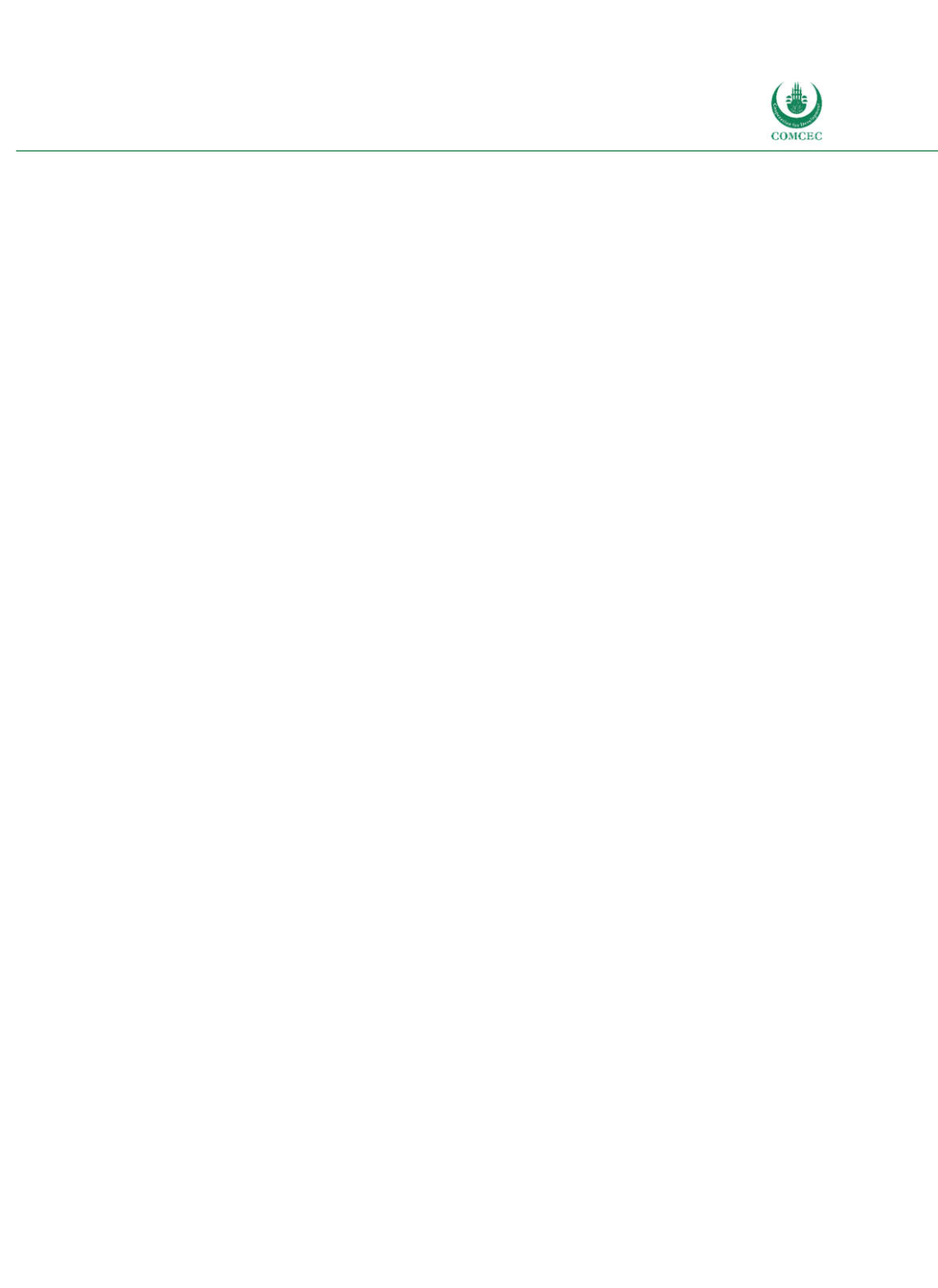

Improving Public Debt Management
In the OIC Member Countries
175
4.3
Comparison of Islamic and Conventional Finance Practices
In Iran and Sudan the whole financial system relies on Islamic principles. Iran has the largest
share of worldwide Islamic banking assets (about 37%). Saudi Arabia is also one of the leading
countries in Islamic finance, holding the second largest share of worldwide Islamic banking
assets (about 19%). Consequently, these countries also use Islamic finance instruments for
public debt management. However, debttoGDP ratios in Iran and Saudi Arabia are very low,
amounting to 17.1% and 5.8% in 2015. Public debt in Saudi Arabia is completely domestic,
while the share of domestic public debt in Iran accounts for more than 90%. But the declining
oil revenues give rise to additional borrowing needs and Iran and Saudi Arabia plan to tap
international debt markets. To prepare international bond issuances, legal and organizational
structures for debt management are being established at the moment. In contrast, Sudan has a
relatively high debt ratio (68.9%) and about 90% of public debt is external.
The central bank of Saudi Arabia issues SAMA Bills whose returns depend on the Saudi
Interbank Bid Rate and SMAM Murabaha. The government has issued Government
Development Bonds (GDBs). Although GDBs are not defined as Islamic bonds, they have the
feature that they are “
zakah
(compulsory alms) deductible” for domestic investors. The
government has also issued sharia compliant Floating Rate Notes (FRNs) and
murabaha
. The
general rise in popularity of corporate and quasisovereign
sukuk
and other Islamic finance
instruments in Saudi Arabia indicates that Islamic bonds will play also a bigger role in the
future of the country’s public debt management.
The government of Iran has mainly borrowed from domestic Islamic banks by taking out loans
with fixed rates of return in the past. In 2015, Iran has started to expand its Islamic bond
market. There are various types of instruments such as
murabaha
,
musharakah
,
ijarah
, and
different types of
sukuk
with various maturities. Sovereign
sukuk
,
ijarah
, and Sovereign
Settlement Bills were issued for the first time with the beginning of the Iranian fiscal year in
March 2016. Islamic Treasury Bills (ITBs) were introduced, too, describing zero coupon bonds
sold at a discount to their face values. The acquired profit is nontaxable and they are nontransferable. ITBs have a one year maturity and are traded predominantly at the Iran Fara
Bourse.
The government and the Central Bank of Sudan (CBoS) use various shortand longterm
Islamic finance instruments for debt and liquidity management. The central bank uses Central
Bank
ijarah
Certificates (
shihab
) for open market operations whose returns are fixed and
distributed monthly. Furthermore, the CBoS uses
sukuk
bonds for the management of liquidity.
The government uses two types of
sukuk
: Shortterm Government
Musharak
Certificates
(GMCs), also called
shahama
, which are issued by the MoF and National Economy and mainly
used for liquidity and cash management, and longterm Government Investment Certificates
(GIC), also called
beshra
. The nominal value of the instrument is distributed in profits quarterly
or biannually. The market for GICs has been stagnating since its introduction in 2003,
especially compared to the market for GMCs, which has been growing steadily since 1999
because of the specific characteristics of these instruments such as high profitability, low risk,
shortterm maturity and high liquidity.
The remaining case study countries mainly use conventional finance instruments for public
debt management such as shortterm TBills and longterm TBonds. But also other OIC
countries with conventional finance systems have introduced Islamic finance instruments.
Countries such as Gambia, Togo and Oman have already issued
sukuk
. Other countries such as
Egypt, Kazakhstan, Mozambique, Nigeria and Uganda have created legal prerequisites to use
Islamic finance instruments and/or are planning to issue
sukuk
in the next years.
















